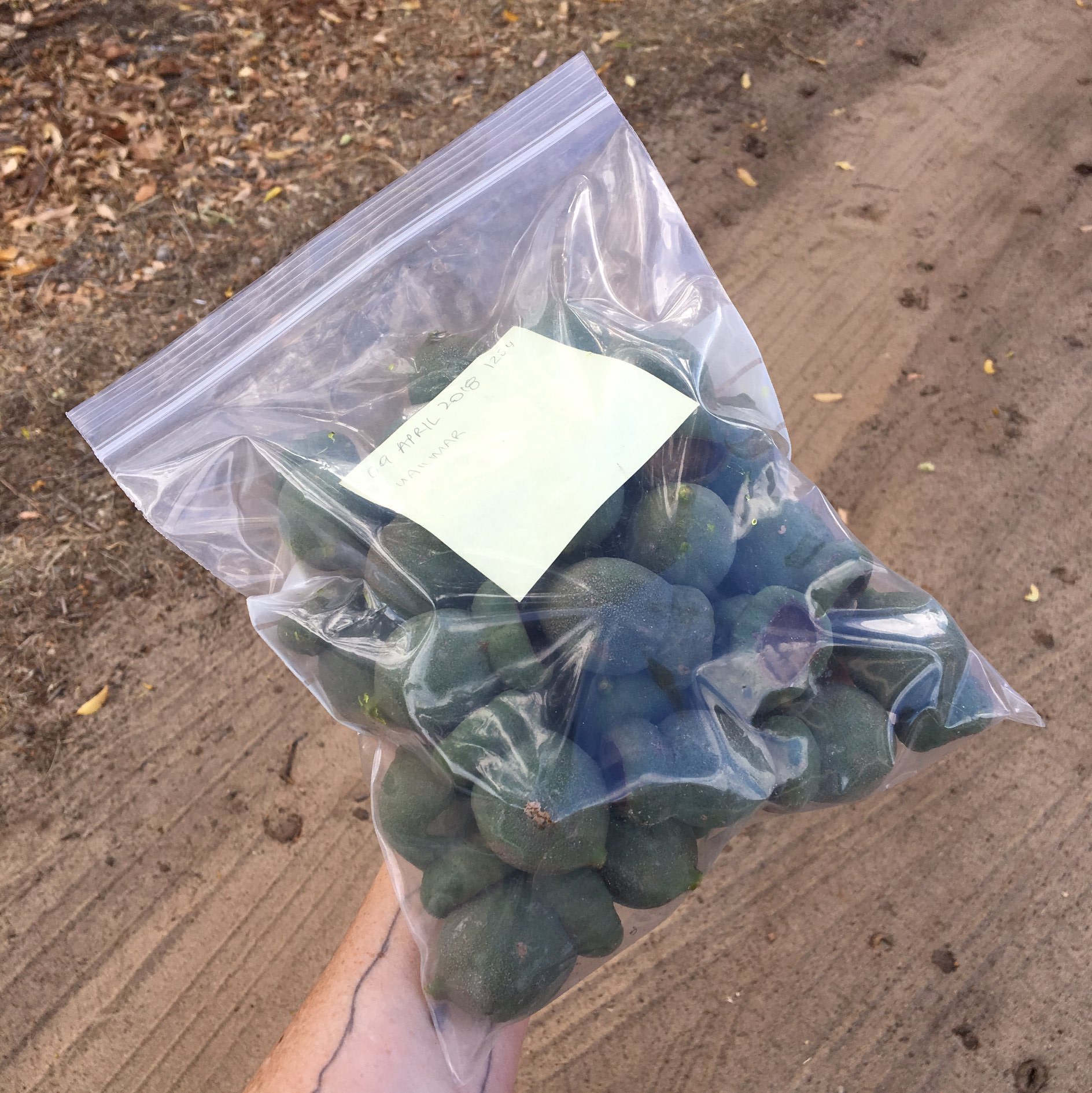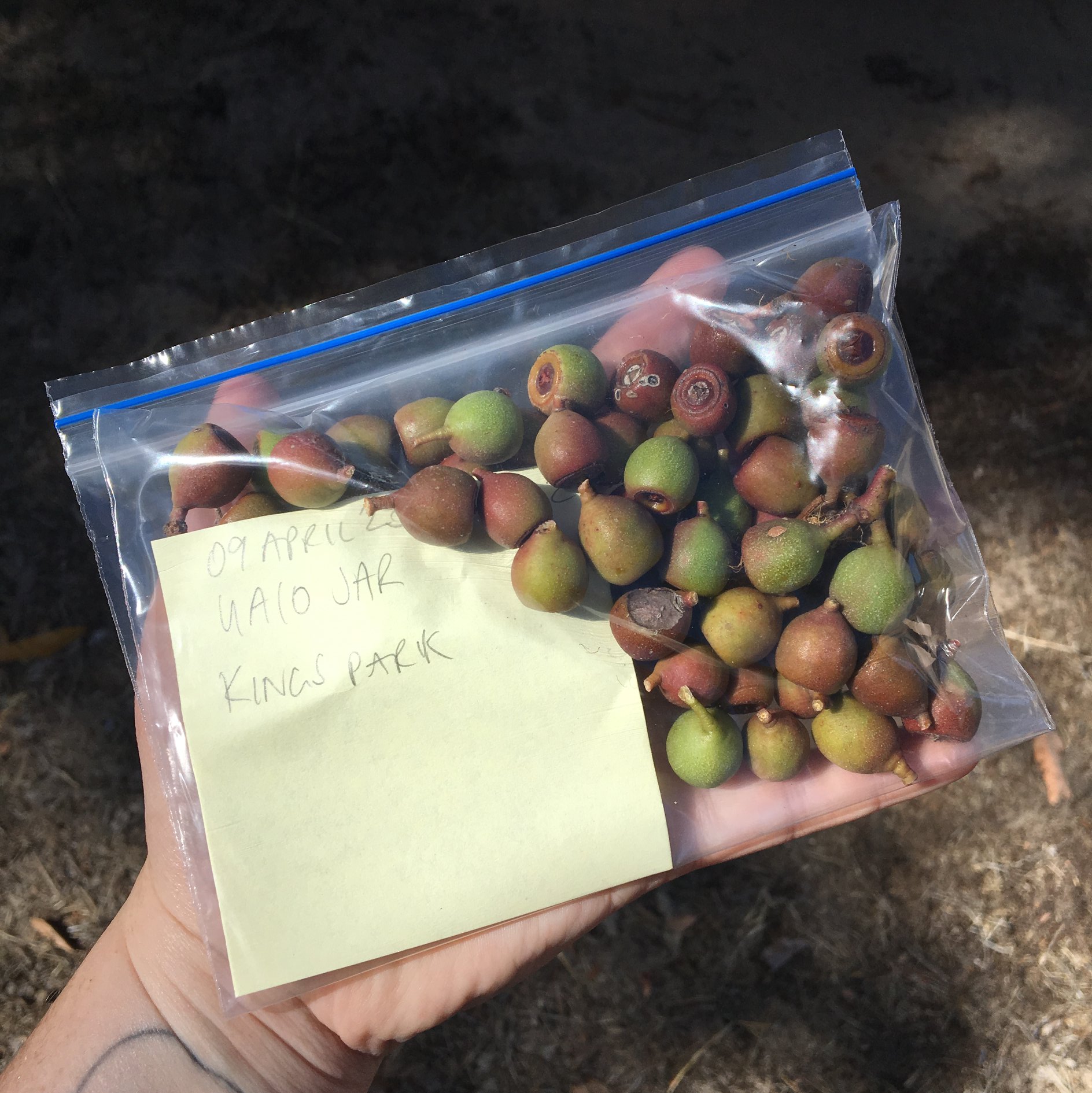Urban fieldwork can be tricky, especially when you need to access trees that are on private property, behind fences. Hopefully Citizen Science can come to my rescue! Scroll to the bottom if you just want the instructions without my waffle.Some quick backstory: for the nutritional component of my PhD I am analysing the seeds of the three main food species of the forest red-tailed black-cockatoo in and around Perth. These species are marri, jarrah, and cape lilac. Nutritional tests are very expensive, so unfortunately I can't test all the species that the cockies feed on.In order to do these tests I need seeds. Fresh seeds. So I need to collect fresh fruits directly from trees. In the forest this is fine, as I have DPaW permits that allow me to access National Parks and collect native species. In urban areas I've run into some difficulties. While I have gained permission from the local councils to collect fruits from trees in parks and on verges there are a limited number of park and verge (street) trees that fit my requirements. Firstly, they must be of the correct species, they must be fruiting, and they much have fruit that is low enough for me to collect with the equipment that I have. Some suburbs are better than others for having street trees. For example, Nedlands has heaps of cape lilac trees that are accessible from alleyways or planted on the street, and Kings Park is of course full of marri and jarrah trees.Unfortunately, a lot of the trees that I have located and monitored over the past two years are located in backyards, especially the cape lilac trees. I just don't have access to the trees to collect the fruits. I also can't really randomly knock on people's doors asking to trim their trees. People think that's weird.Instructions:Anyway, I'm hoping that members of the public, and people who are interested in the cockatoos and in my project will come to my rescue and help me out. There are a few rules though that need to be followed to make sure everything is done safely, scientifically, and consistently.
- Safety first! Please make sure to collect the fruits in a safe manner. This means not standing on unsafe objects to gain height! Use secateurs or long-handled pruners to snip off bunches of fruit.
- Fruits must be collected from the tree, not the ground, and put straight into the freezer.
- Fruits need to be labelled with the date, time, and location. Write this info on a slip of paper and put it in the bag along with the fruits when you put them in the freezer.
- Fruits need to be of the right age. I'll put some photos below.
- Enough fruits need to be collected. This varies depending on the species as the fruits are different sizes. See below.
- Contact me if you plan to collect fruits so I can make sure you are in the right location. See map. Circles are approximate.
 Please forgive the fruit photos. They're all I can find at the moment. I'll update the post with better photos once I find them on my computer.Cape lilacFruits should be unripe (green). Collect at least 30 fruits.[gallery ids="301,302" type="rectangular"]MarriFruits should be unripe, but fully developed (large and green). Collect at least 10 fruits.
Please forgive the fruit photos. They're all I can find at the moment. I'll update the post with better photos once I find them on my computer.Cape lilacFruits should be unripe (green). Collect at least 30 fruits.[gallery ids="301,302" type="rectangular"]MarriFruits should be unripe, but fully developed (large and green). Collect at least 10 fruits. JarrahFruits should be unripe, but fully developed (green to green-brown). Collect at least 30 fruits.
JarrahFruits should be unripe, but fully developed (green to green-brown). Collect at least 30 fruits. Once again, please contact me if you would like to help or if you have any queries!Thanks!- Erika
Once again, please contact me if you would like to help or if you have any queries!Thanks!- Erika